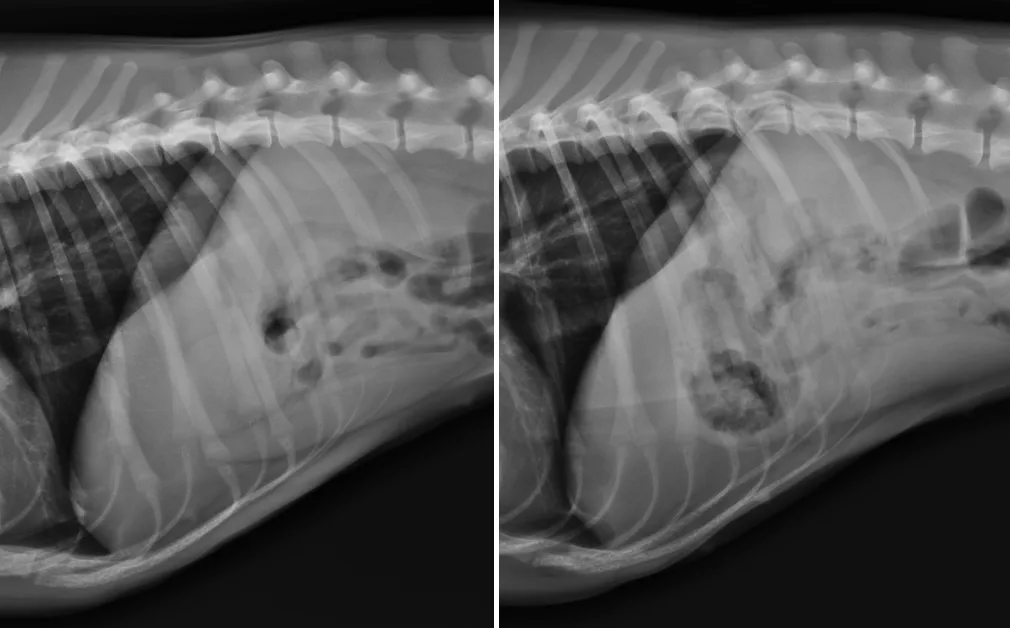
Source
Yuen F, Dennison S. Radiographic identification of challenging gastrointestinal tract foreign bodies: a descriptive study of how appearance varies in air versus water to aid interpretation. Am J Vet Res. 2024;85(7):ajvr.23.10.0237. doi:10.2460/ajvr.23.10.0237
Research Note
Radiographic findings in patients with known or suspected foreign body ingestion may be inconclusive.
This study was developed to provide radiographic descriptions of radiolucent foreign material. A total of 68 objects in 7 categories (ie, balls, food, fabric, wood, soft plastic, hard plastic, other) representative of common causes of GI obstruction were radiographed surrounded by air and then by water to simulate the GI environment.
Objects appeared differently in each media. All objects except a food storage bag were identifiable when radiographed in air, and many became obscured in water. Some objects appeared predominately opaque in air and relatively lucent in water or vice versa. Intermediate transparency could be interpreted radiographically as fat. Repositioning a patient may alter the environment surrounding the foreign body, causing a markedly different appearance on one radiographic projection versus another.
This study is open-access with images presented in the supplementary materials section.
You are reading Research Notes, a research summary resource presented by Clinician's Brief. Clinician's Brief does not conduct primary research.